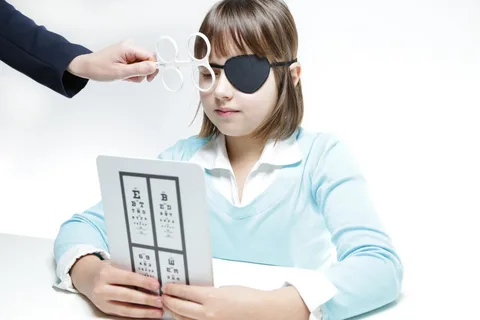Causes of Visual Impairment
There are several potential causes of visual disability. Diseases and disorders that can damage the eyes or nerves and lead to a loss of vision include:
Cataracts – A cataract is a cloudy area in the lens of the eye that affects vision. Cataracts are very common in older people and some develop from aging, but they can also be caused by eye injuries, medical conditions like diabetes, long-term exposure to UV rays, and certain medications.
Glaucoma – Glaucoma is a group of eye conditions that damage the optic nerve, which connects the eye to the brain. It’s often caused by an increase in fluid pressure inside the eye. Visual Impairment Left untreated, glaucoma can cause vision loss and blindness.
Diabetic retinopathy – High blood sugar levels in people with diabetes can damage tiny blood vessels inside the retina over time. Leaking blood vessels and scarring can cause blurred vision or blindness. Diabetic retinopathy is a leading cause of vision loss among working-age adults.
Macular degeneration – The macula is a small area in the center of the retina that provides sharp, straight-ahead vision. Macular degeneration damages the macula due to aging or other factors like smoking. It’s the most common cause of vision loss in Americans over 65.
Retinitis pigmentosa – A group of genetic disorders that cause the breakdown and loss of cells in the retina. It usually appears in childhood or early adulthood and can lead to significant vision problems over several decades.
Myopia (nearsightedness) – When vision is clear at close range but blurred at a distance due to an eye that is slightly too long or has too much refractive power. Myopia is caused by both environmental and genetic factors and often develops during childhood and teenage years.
Stroke – A stroke can damage the parts of the brain that control vision or the optic nerve. Vision problems after a stroke may include vision loss, blurry vision, double vision, or the inability to see objects on one side of the visual field.
Eye injuries – Damage to the eyes from injuries like infection, inflammation, blunt or sharp impact, chemical burns, and radiation exposure can potentially harm vision. Even minor injuries can sometimes cause vision impairments later in life.
Types of Visual Disability
Visual disability exist on a spectrum ranging from mild to severe. Some common types and their levels of vision loss include:
Low vision – Some usable vision remains, but the eye condition has reduced vision enough that regular eyeglasses, contact lenses, medication, or surgery cannot fully correct vision to a “normal” standard. Individuals with low vision may have 20/70 to 20/200 vision in their better eye, or a visual field of less than 20 degrees.
Legally blind – Describes an individual with vision loss that prevents tasks such as reading regular sized print or navigating environments without assistance. This level of impairment corresponds to a visual acuity of 20/200 or less in the better eye with correction, or a visual field of 20 degrees or less.
Totally blind – Having no usable vision. While some may still be able to discern light, darkness, or shapes in very close proximity, tasks like reading, recognizing faces, and navigating independently would not be possible without additional aids.
A person’s vision impairment can also be categorized as one-eyed or two-eyed depending on whether the vision loss occurs in one eye or both eyes. Monocular blindness describes a vision impairment in only one eye.
The Impact of Vision Loss
Dealing with a vision impairment presents many daily challenges and lifestyle adjustments. Some common effects of vision loss include:
Reduced mobility and independence – Tasks like reading street signs, navigating unfamiliar places, and driving become difficult or impossible without sight. Assistance may be needed for activities of daily living.
Communication barriers – Significant vision loss interferes with facial recognition and nonverbal communication cues like reading social signals and body language. Adaptive tools are required to access printed information.
Employment issues – Many jobs require a certain level of vision that someone with low vision or blindness could no longer perform safely. Finding alternative, accessible employment or retraining may be necessary.
Social isolation – Reduced interaction with others is a risk as hobbies, pastimes and casual everyday encounters relying on vision become restricted or inaccessible. Targeted supports help combat feelings of isolation.
Emotional adjustment – Adapting to the permanent loss of an ability as essential as sight is psychologically and emotionally challenging. Vision rehabilitation offers counseling for addressing these internal impacts.
Accommodations
With appropriate accommodations, many individuals living with visual impairments are able to participate fully in education, employment, and daily activities. Some common aids and adaptations include:
– Screen reading software for computers like JAWS or NVDA.
– Magnifiers, both handheld and electronic desktop varieties.
– Braille displays and notetakers.
– Guide dogs or white canes for independent mobility.
– Audio books and recordings.
– Large print materials.
– Video magnification systems.
– Text-to-speech and optical character recognition apps.
– Tactile/electronic signage systems in public places.
– Contrast control on electronics.
– Note-taking assistance in classrooms.
With the right combination of support services, technology, and environmental modifications tailored to the specific needs presented by an individual’s vision loss, independent living is wholly achievable. Visual Impairment the goal of rehabilitation is empowering people to reach their full potential despite vision impairments.
Prevention and Outlook
While some causes of vision loss can’t be prevented, maintaining eye health is important for reducing risk factors. Early detection and treatment provides the best outlook in conditions like macular degeneration or glaucoma that often have no symptoms in early stages. Steps include:
– Comprehensive dilated eye exams at least once every two years.
– Proper diet with nutrients like vitamins A, C, E, zinc and omega-3 fatty acids.
– Monitoring blood sugar and blood pressure in diabetics and hypertensive patients.
– Protective eyewear for ultraviolet exposure from sun or industrial sources.
– Immediate medical attention for any eye injury or trauma.
– Not smoking or limiting alcohol intake.
– Learning braille or orientation and mobility skills if low vision or blindness appears inevitable.
With recent advancements in treatments like stem cell transplants, gene therapy trials and bionic retinal implants, the future prognosis is brighter in some previously untreatable cases as well. Overall an interdisciplinary approach centered around rehabilitation optimizes quality of life for all people with vision loss.
Visual impairment, encompassing a spectrum of conditions ranging from partial sight to total blindness, profoundly impacts individuals’ daily lives, presenting challenges in tasks such as reading, navigation, and social interaction. With proper support and accommodations, people with visual disability can lead fulfilling and independent lives, leveraging assistive technologies, tactile cues, and specialized training to overcome barriers and maximize their potential.
*Note:
1. Source: Coherent Market Insights, Public sources, Desk research
2. We have leveraged AI tools to mine information and compile it


